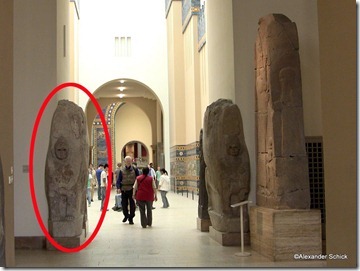A plan by the Israeli government will save the southern end of the Dead Sea from rising waters by harvesting salt.
“Beersheba. Just say the name, and images come to mind of an old, crusty patriarch leaning on his staff in the dry winds of the wilderness.”
Leen Ritmeyer comments on the report that the temporary bridge to the Mughrabi Gate must be removed within two weeks.
The Bible Gateway Blog answers the question: “How should we respond to sensational archaeological claims?”
A 39-year-old archaeology student was arrested for looting archaeological sites, including Tel Shikmona near Haifa. He was caught by the IAA Theft Prevention Unit when he left his cell phone at the site.
The 4th meeting of the Forum for the Research of the Chalcolithic Period will be held on June 2, 2011, at the Israel Museum in Jerusalem. The conference title: “50 Years of the Discovering of the Nahal Mishmar Treasure.” A full schedule of the program is here.
Eric Meyers writes in The Jewish Week on the earliest synagogues known archaeologically. He does not agree with those who wish to re-date many of these synagogues to the 4th-6th centuries. Of the period immediately after AD 70, he writes:
In my view this period in the history of Judaism was as definitive as the period after the destruction of the First Temple in 586 BCE when the exiled Judeans not only survived but managed to pray without the Temple and began the task of editing the books of Scripture that would help them maintain their identity and keep the traditions of former times. The first centuries after 70 CE also led to publication of the Mishnah by 200 CE and many of the early biblical commentaries. It is unimaginable that all of this literary creativity, along with the development of the synagogue liturgy, could have happened without a physical setting in which it could take shape. The most logical setting is the synagogue as a structure where the Torah was read, translated and interpreted; where homilies were given; and where the liturgy was sung and recited.
HT: Joseph Lauer, Jack Sasson


